Exploring the Mayan ruins of Uxmal, Yucatán, Mexico
Drive the Yucatán Peninsula's "Ruta Puuc" to explore the unique Mayan architectural style that thrived in this region between 700 and 900 AD.
This circular route starts in Mérida and encompasses the archaeological sites of Uxmal, Kabah, Sayil, Labná, and Xlapak. These sites functioned as religious, political, and economic centers of the Maya civilization at its height.
Puuc architecture is characterized by its intricate facades, adorned with elaborate patterns carved from stone veneer. The construction methods utilized advanced techniques, resulting in a ‘baroque’ exterior that conceals a solid masonry core.
Uxmal is one of Mexico’s most well-preserved Maya sites. Designated a UNESCO World Heritage Site in 1996, the site features remarkable structures that provide a glimpse into the history of the Maya civilization

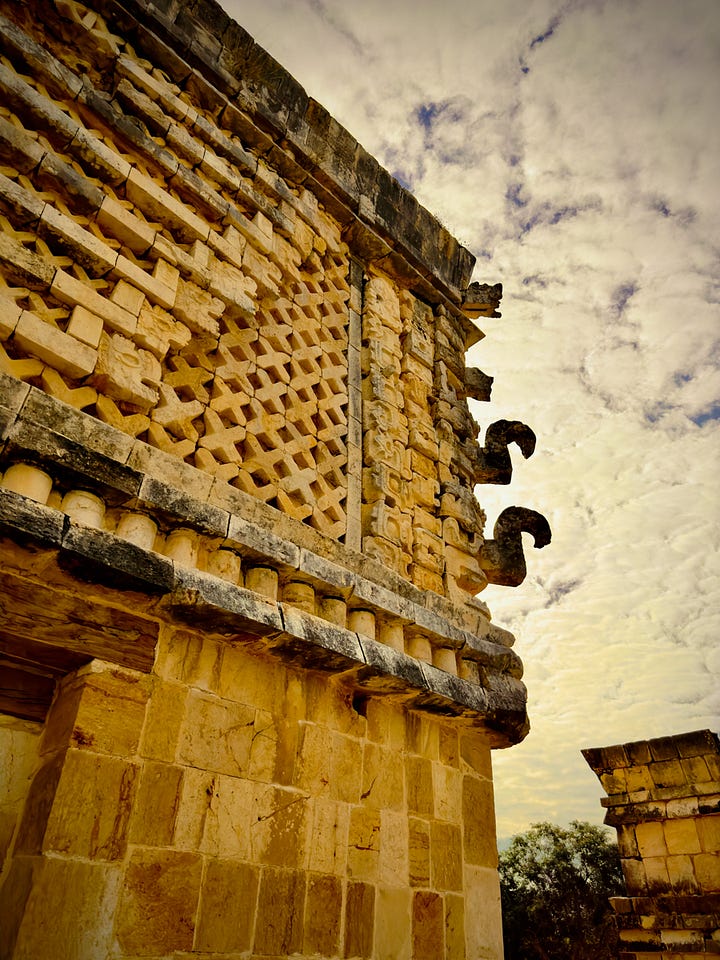

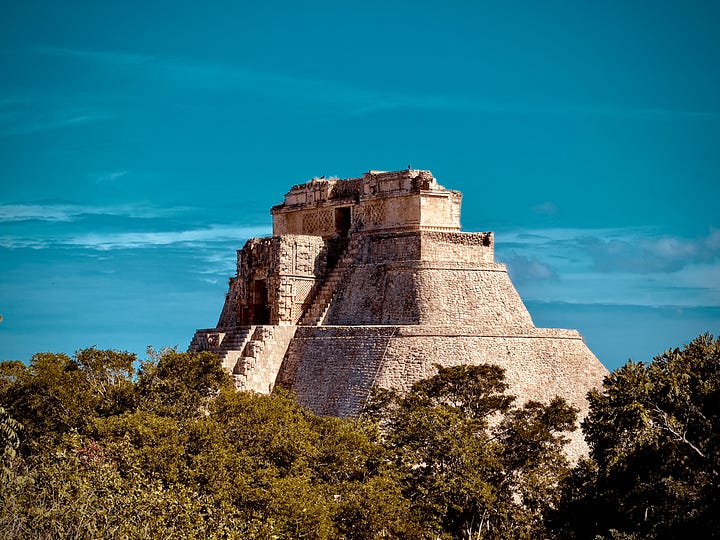
Founded in 600 A.D., the Mayan city of Uxmal emerged as a vital cultural and economic center during the eighth century, boasting a population exceeding 25,000.
The intricate Puuc style displays captivating ornamentation, including elements such as the Rattlesnake. Known as tzabcan, the Rattlesnake embodies geometric symbolism within Uxmal’s architecture.
Researchers suggest that the Mayans integrated rattlesnake patterns into their mathematical models for construction. Nature significantly influenced these early designs.
Location::
Uxmal, Yucatan, Mexico
20.362220192107124, -89.7665703215049
Talking with the Iguanas by the Pool
It was midday when I returned from four hours of exploring the Mayan site of Uxmal. The morning had been beautiful, and I had taken nearly 400 photos. I was staying at “The Lodge at Uxmal,” a fantastic place located right at the park’s entrance. It was hot, and I craved a cold beer and a swim! As I walked down the gray stepping stones toward the pool, I wanted to check the water temperature. When I reached the water’s edge, I noticed there was no space for sunbathing—"Grupo Iguana" had claimed the party spots at the rocky edge of the pool. They were large, and I didn’t disturb them as I knelt to take a few pictures. I wondered if they ever took a swim.
Iguanas are an important part of Mexico’s history. They symbolize the spirit of the indigenous Mayans and are prominently featured in iconic Mexican artworks, crafts, paintings, and photography. Delicious iguana has long been part of the culinary tradition throughout Mexico. In southern Mexico today, you can still find many iguana delicacies, including tacos, stews, soups, and birria. There might also be iguana in yellow mole and tamales. I remember iguana street tacos from my childhood in Mexicali; I wonder why I never tried one. Maybe it was the salsa?
Protection is crucial for ensuring the iguana’s future. Government conservation programs are enforced to manage their habitats and monitor populations against overharvesting.




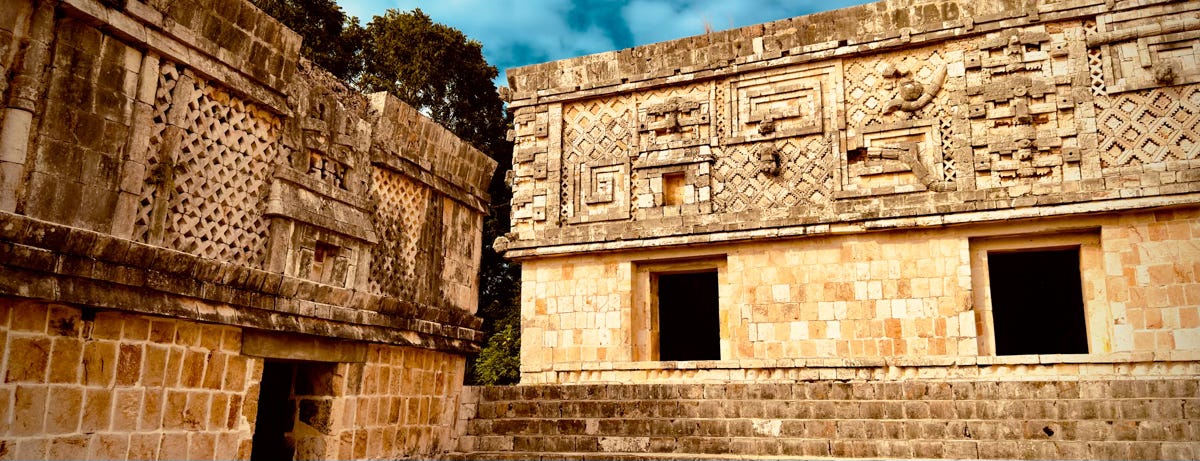


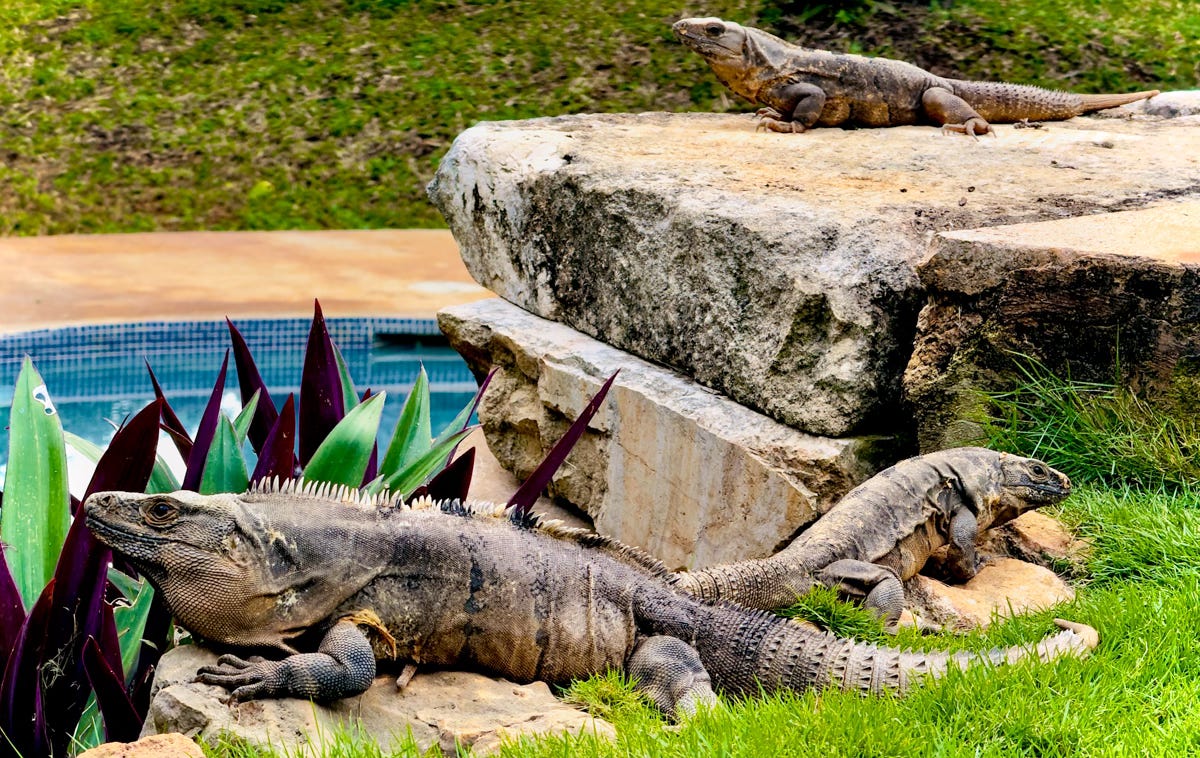
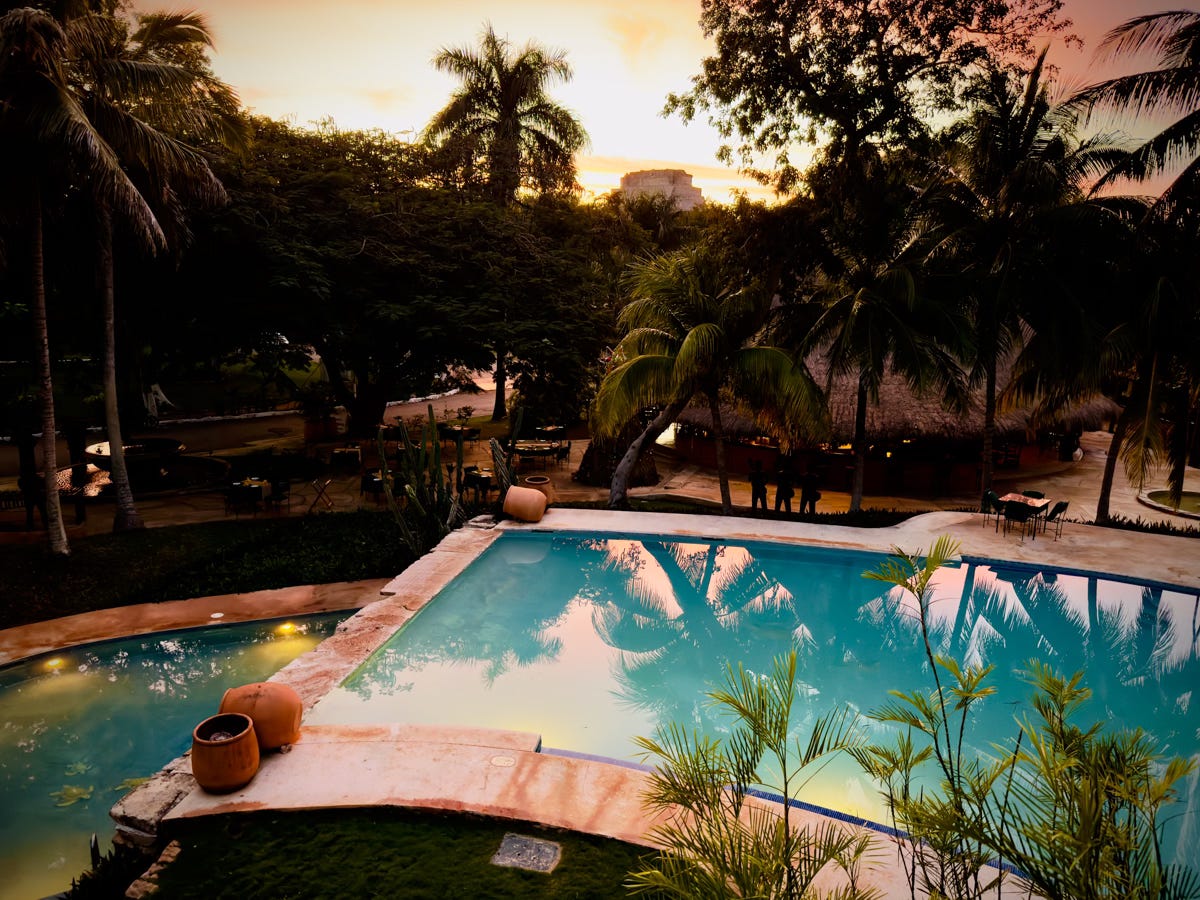
A beautiful commentary on Uxmal and more, Marty. It’s such a beauty of a site. I think the sun and shadows on those pinkish rocks make it even more spectacular.
Interesting. The only part of Chiapas I've seen iguanas in is El Chiflón, and the iguanas there are protected. I wonder if they were eaten too much here so you can't find them anymore. 😅